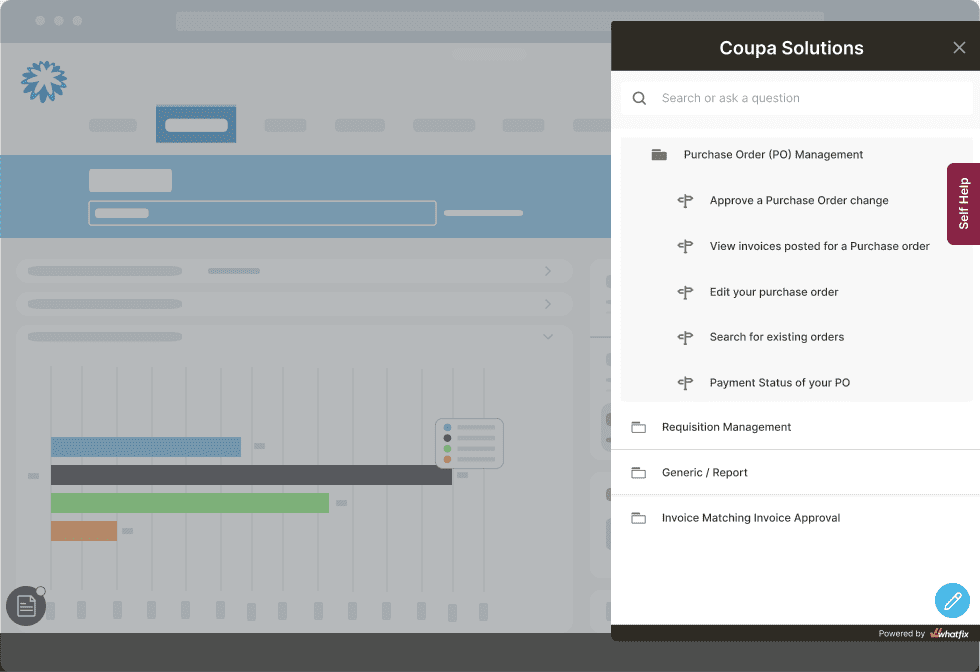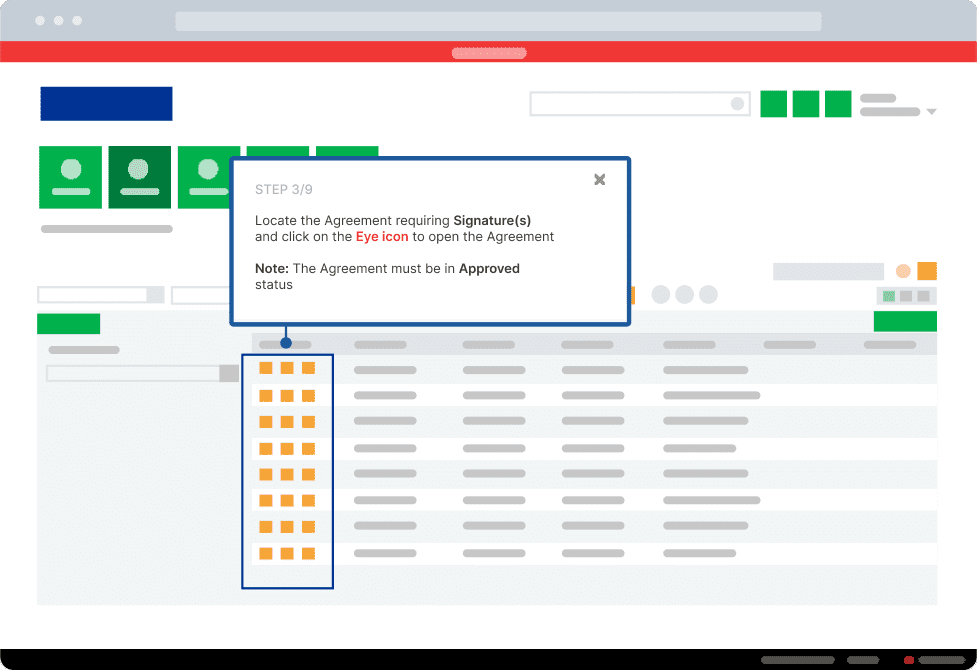In the rush to create and launch a corporate L&D strategy, enterprises often lose sight of what is important for employees. Training must be contextual to employees, built around their needs, and help them overcome their day-to-day challenges.
However, the importance of everyday work trumps learning. The urgency of completing your expected responsibilities and tasks is more important than learning and development.
But what if you could embed learning into everyday workflows without disrupting employee output? This is the concept of learning in the flow of work, which is disrupting the $200 billion corporate training market.
The “learning in the flow of work” approach to employee training and development was first coined by Josh Bersin in 2018. It focuses on learning experiences that empower employees with the right performance support, materials, and reinforcement training at the moment of need.
This type of employee training provides contextual training that makes learning a continuous effort, always happening as your employees conduct their work.
In this article, we’ll discuss the concept of learning in the flow of work, the challenges of enabling embedded learning, and how you can utilize emerging technologies like Whatfix to enable your employees with in-app guided experiences and on-demand support – all integrated directly with their digital business processes and tasks.
What Is Learning in the Flow of Work?
Learning in the flow of work refers to the integration of learning activities and resources directly into the daily workflows of employees. Rather than having separate training sessions or dedicated learning time, this approach seamlessly embeds learning opportunities within the natural flow of employees’ work.
It aims to provide just-in-time support, relevant knowledge, and learning resources that are readily accessible when needed. Learning in the flow of work emphasizes the idea that learning should be a continuous and integrated part of the work process, enhancing productivity, performance, and employee development.
Key Principles of Learning in the Flow of Work
The 70-20-10 Model for corporate learning and development is an evidence-backed research model that breaks down how employees learn.
It states that employees acquire 70% of their knowledge from on-the-job experiences and hands-on learning, 20% from social learning and interacting with colleagues, and 10% from more formal professional training and development.
Learning in the flow of work uses this breakdown to its advantage by aiding employees in their daily tasks and workflows with embedded learning experiences and contextual help.
To embed effective learning in the flow of work experiences into your employees’ workflows and tasks, a few fundamental aspects must be met:
- Contextual help: When learning happens as micro interactions embedded in your employee workflows, learning and knowledge retention happen naturally. To be contextual, this help must be related directly to your employees’ specific tasks and projects, be immediately applicable, and aid them in overcoming challenges.
- Continuous: Traditional classroom-based training is finite. Employees must find time to schedule training seminars, read training materials, and watch learning webinars. Learning in the flow of work disrupts this learning style, providing employees with embedded, continuous learning that supports them when needed. This enables a “always learning” culture without negatively impacting employee productivity or output.
- Just-in-Time: Just-in-time training provides individuals with the information or skills they need precisely when they are required to perform a task or solve a specific problem. Unlike traditional training models that often occur in settings removed from the work environment and well before application, JITT delivers targeted, context-specific training directly in the workflow, ensuring immediate applicability and relevance.
- Integrated: Learning in the flow of work embeds knowledge and assistance directly into your employees’ existing workflows, enterprise systems, and throughout the digital workplace. Employees are enabled with in-app guidance that walks them through contextual processes, alerts them to potential mistakes, equips them with relevant knowledge, and is there when employees require additional assistance.
- On-Demand: Learning in the flow of work provides employees with access to learning resources, performance support material, and contextual knowledge on-demand, at the moment of need. This helps immediately overcome skill gaps and drives knowledge transfer.
- Push: Traditionally, employees must seek out help documentation, learning resources, and knowledge – examples include searching Google Drive for a specific SOP, searching YouTube for a video tutorial, or signing into an LMS to access a training module. Learning in the flow of work erases this friction for employees by “pushing” contextual learning and support to employees in their workflows – helping employees to retain process knowledge and improve productivity.
Related Resources
Benefits of Learning In the Flow of Work
In a world where employees expect to have all the information and resources at their fingertips, L&D teams can use just-in-time training to demonstrate that they understand the value of employees’ time and experience.
Employees can stay engaged by providing bite-sized microlearning and personalized training content on demand and retain more of the information they learn. This premium on relevance, flexibility, and efficiency helps increase knowledge retention and long-term productivity.
A few of the key benefits of learning in the flow of work include:
1. A more engaged learning experience that drives knowledge retention
Delivering training that’s more relevant to employees’ roles and faster to complete results in higher learner engagement and faster skill competency naturally. By providing learning opportunities within their daily tasks, employees feel more connected to their work and are motivated to improve their knowledge and skills continuously. This higher level of engagement translates into increased job satisfaction, productivity, and employee retention.
While traditional learning will still be utilized for more intensive training experiences and needs (like employee onboarding or new software training), learning in the flow of work works together with traditional learning methods. Employees can acquire large chunks of knowledge in these more classroom or traditional learning sessions.
Then, by integrating in-app nudges, timely support, and other embedded forms of learning helps employees put this training into practice through small micro-reinforcements. This learning happens directly in employees’ daily workflows, while they’re completing tasks. This builds new competencies, ensures business compliance, drives process adoption, and improves knowledge retention.

2. Increased efficiency and productivity
When learning is integrated into work processes, employees can quickly acquire the necessary knowledge and skills to address challenges and perform tasks more effectively. The just-in-time nature of learning in the flow of work ensures that employees have the resources they need at the moment of need, resulting in improved efficiency and increased productivity.
3. Continuous learning culture
By emphasizing continuous learning within a work environment, organizations can foster a strong learning culture. Employees become more proactive in seeking knowledge, sharing insights, and embracing a growth mindset. A continuous learning culture fuels innovation, agility, and a commitment to ongoing improvement at all levels of the organization.
4. More cost-effective method of training
Integrating learning into the flow of work is more cost-effective as compared to traditional training methods. By leveraging existing work platforms and tools, organizations can eliminate or reduce the need for separate training sessions, travel expenses, and dedicated training facilities. This results in significant cost savings while promoting ongoing employee development.
Use Cases for Learning In the Flow of Work
Learning in the flow of work via just-in-time training is effective across various workplace circumstances, especially when employees need to learn about a particular topic or how to perform a specific skill quickly. Here are a few use cases for learning in the flow of work and just-in-time training
1. Driving end-user adoption during software implementations
Just-in-time training in the flow of work optimizes software adoption by embedding the learning process directly into the user’s journey with the new software. As employees navigate the software, learning in the flow of work provides on-demand, in-app guidance, tailored to the specific features or tasks the user is interacting with.
This real-time educational approach eliminates the need for extensive pre-implementation training sessions, reducing the learning curve and accelerating user proficiency with the software. By offering immediate access to information and practical walkthroughs, JIIT ensures that employees can quickly overcome obstacles and efficiently utilize new software capabilities, leading to a smoother implementation process and faster realization of the software’s benefits.
2. Digital process changes
As business processes and procedures evolve, employees need to adapt. By enabling employees with training in the flow of work, L&D teams can disseminate updates quickly and walk team members through any changes that affect them.
This way, employees can practice continuous learning and growth without needing to take significant, regular time off of work to do so. With embedded training experiences, employees can absorb essential knowledge, learn about new processes without skipping a beat, and adopt new business processes.
3. Compliance and regulatory updates
In industries where compliance is vital, just-in-time learning in the form of in-app support can be deployed to keep employees abreast of any updates to regulations or laws they must comply with. This not only helps employees avoid inadvertently causing trouble for the company, but it also helps them understand why compliance procedures exist and align their work habits with the broader vision, whatever that may be.
4. Customer service excellence
Supporting employees in the flow of work can be used in customer service training to accelerate new service agent onboarding, improve soft skills, nudge agents to take specific actions, or teach team members about new products or service offerings. Help agents find the information they need to provide accurate information and resolve customer issues quickly. Just-in-time training can also be delivered to customers through self-service knowledge bases and in-app messaging to help them resolve inquiries without contacting an agent.
Challenges of Learning In the Flow of Work
While learning in the flow of work offers significant benefits, there are also challenges that organizations face when implementing this approach to L&D. A few common challenges include:
1. Ensuring comprehensive understanding
Learning in the flow of work and just-in-time training content must deliver information and instructions accurately and concisely to assist employees in their moment of need. To combat this challenge, L&D teams can use feedback from stakeholders and employees while creating and revising content to ensure it is optimally helpful to its intended audiences.
2. Balancing standardization and customization
Personalized learning goes a long way toward improving L&D programs, but it is critical to avoid over-personalizing content to the point where it is not widely accessible or valuable, even among employees in the same role. The key here is achieving a balance between standard and customization to create learning while doing content that addresses a variety of issues and can be used across teams and departments.
3. Individual learning preferences
Addressing the diverse learning needs and preferences of employees can be challenging when implementing learning in the flow of work. Designing learning experiences that cater to individual needs while ensuring consistency and standardization across the organization requires careful planning and customization options. Enterprises must create learning cohorts based upon individual needs and learning styles of effectively implement a learning in the flow of work model.
4. Measuring effectiveness
Ensuring the accuracy and relevance of learning resources integrated into work platforms requires effective enterprise knowledge management. This includes keeping all process and training documentation updated and accessible, as well as having self-help knowledge centers like a knowledge base or internal wiki for employees to find the performance support they need. Regular updates and quality control measures need to be implemented to provide employees with up-to-date and reliable help and information.
How To Enable Learning by Doing
Implementing learning in the flow of work requires thoughtful planning by enterprise L&D teams. Here are some key steps to effectively implement this learning approach.
1. Assess learning needs
Conduct a thorough training needs analysis of your organization’s biggest learning gaps and identify areas where learning can be integrated into your employees’ daily work processes. Understand the skills and knowledge gaps that need to be addressed for improved performance.
2. Align with work tasks
Identify specific work tasks or processes where learning can be integrated into the workflows themselves with helpful, embedded guidance, tooltips, field validations, and more. Determine the key points where employees can benefit from learning support or guidance in their workflow.
You can embed performance support and workflow guidance directly into your applications with a digital adoption platform like Whatfix. Whatfix enables L&D teams with a no-code editor to create and launch in-app flows, smart tips, task lists, pop-ups, self-help wikis, and more – all providing moment of need learning, in the flow of work, that’s contextual to your employees tasks and workflows.

3. Include the 4Es into your content mix
Josh Bersin, an L&D analyst first credited with creating the “learning in the flow of work” concept, believes that to get continuous learning right, enterprises must follow a four-approach framework. Those four approaches include:
- Education: Education should consist of training elements that have a fixed start and end and can be measured and tracked. These include workshops, instructor-led courses, self-paced online videos, and more.
- Experience: Integrate learning elements into everyday experiences that allow them to become a part of your employees’ everyday work. This includes development plans, checklists, job rotation, on-the-job assignments, in-app guidance and nudges, and more.
- Exposure: This involves training elements that focus on interactions and relationships to encourage knowledge sharing through peer-to-peer feedback, collaborative learning, and mentoring.
- Environment: This includes all the tools, systems, and infrastructure that support continuous learning, such as articles, books, games, eLearning courses, L&D tools, your corporate LMS, and other training apps.
4. Develop microlearning resources
Microlearning is an approach to learning that breaks training content down into small, bite-sized information modules. Smaller learning sessions, aligned with the identified work tasks, provide all the information necessary for learners to achieve a specific training objective in a short window of time. Microlearning is more effective because learners apply the skills they’ve acquired before they lose attention, thus leading to higher rates of learning retention.
5. Accessibility
Learners need to be able to find the information they are looking for whenever they desire it, on whatever platform, and in the right context. Understanding your employees’ capabilities and how they consume information is critical to delivering the right learning experience at the right time.
6. Embed learning tools
Leverage digital tools and technologies to facilitate learning in the flow of work. Examples of L&D tools that enabled learning in the flow of work include:
- Learning Management Systems (LMS): An LMS is a digital platform that administers, tracks, and delivers educational courses or training programs. In the context of learning in the flow of work, an LMS can provide on-demand access to learning resources, enabling employees to learn new skills or knowledge as needed without interrupting their work.
- Digital Adoption Platforms (DAP): DAPs guide and support users in adopting and maximizing new digital tools or software. They provide real-time, contextual assistance within the application itself, helping employees learn how to use the tool effectively during their regular workflow, reducing the learning curve and improving productivity. They also integrate with your knowledge repositories to centralize your documentation and learning materials, making it easier to access and searchable.
- Knowledge Bases: These are centralized repositories of informational articles, FAQs, how-to guides, and other resources that provide employees with quick and easy access to essential knowledge. When integrated into the workflow, they enable employees to find solutions to their queries or learn new information directly in the course of their work.
- Performance Support Tools: These tools provide targeted guidance at the moment of need, helping employees perform tasks more efficiently and effectively. By delivering just-in-time learning and assistance within the work context, they bridge knowledge gaps, enhance performance, and reduce the need for formal training.
- Collaboration Platforms: These are digital tools that facilitate communication, collaboration, and knowledge sharing among team members. When used as a part of learning in the flow of work, they enable employees to learn from each other’s experiences and insights, share knowledge, and solve problems collectively within the workspace, thus promoting continuous learning and improvement. Examples may include Slack, MS Teams, or Loom.
7. Provide on-demand performance support for employees
Ensure that employees have the necessary support and self-help resources to access training materials and receive assistance when and where they need it. Offer contextual guidance on how to navigate the learning resources and promote self-directed learning.
With a DAP like Whatfix, enable employees with an in-app resource center (we call it Self Help) that integrates with your internal knowledge repositories like internal wikis, training resources, SOPs, LMS modules, onboarding materials, and more. Employees are enabled with contextual help depending on where they are in an application and their role.

Whatfix Self Help is now powered by AI, allowing employees to search for any contextual issue or help documentation they need – right inside the application they’re using.
Whatfix AI instantly generates an answer to their contextual query based on your internal documentation – and provides citation links for employees to learn more about a topic or can prompt an in-app guided experience that walks employees step-by-step through a process.

8. Build a strong corporate learning culture
Remember that continuous learning is not just about technology or content formats but also about humans and culture. You should work towards building an organizational culture that encourages the democratization of learning. Everyone should be empowered to share knowledge via mentorship and connected internal social networks, which helps to build a learning organization.
Learning in the Flow of Work Examples
Learning in the flow of work supports employees’ productivity and empowers organizations to achieve business outcomes—all without sacrificing learning.
Here are four examples of organizations enabling their employees with embedded learning and interactive support directly in their daily workflows with Whatfix.
1. Ferring Pharmaceutical Supports Its Employees on All Icertis-related CLM processes with in-app guidance
Contract management is better at Ferring Pharmaceuticals. With Whatfix’s connected digital adoption platform (DAP) guided Ferring employees through the complexities of thousands of Icertis contract tasks and workflows, improving the user experience and accelerating contract execution. This freed up more time for users to focus on their business and allowed the Legal Operations team to spend more time on legal services innovation..
Contextual information, step-by-step instructions, and a knowledge repository were all available in the moment of need. This empowered Ferring to deliver an agile and improved Icertis user experience, ensure contract compliance, and reduce the volume of contract support inquiries.
With Whatfix, Ferring:
- Delivered an intuitive, engaging user experience, with self-help answers to queries directly in the app.
- Reduced time-to-onboard users and increased user adoption.
- Decreased support tickets by 33% in a single quarter.
- Averaged 97% user-search success when using Self Help.
- Enabled employees to focus more on their business projects and less on the contract process.

2. Renewable Energy Group (REG) Reduces Time-to-Proficiency on Salesforce & Oracle’s JD Edwards 50% With Guided Learning
Renewable energy giant REG lowers time-to-proficiency on its enterprise CRM, ERP, and other applications, while also reducing daily IT support queries and human errors, all with Whatfix’s in-app guidance, continuous learning, and on-demand self help. With REG, Whatfix enabled employees with in-app learning on its Saleforce CRM and JD Edwards ERP processes, reducing time-to-proficency by 50% – a 3 month reduction.

3. Sentry Saves $1M a Year with Learning in the Flow of Work
Sentry Insurance used Whatfix to build personalized, in-app learning across Workday and seven other internal and customer-facing systems, including customer administration, policy management, claims, and a customer portal. Intuitive guidance for 2,000 associates and 75,000 portal customers drove customer-centric policy administration, agile claims processing, and sales growth.

Learning in the flow of work also drove training retention for knowledge workers, providing embedded mediums for Sentry to drive company news, change awareness, and knowledge transfer.

4. Hays enables sellers with in-app, guided CRM experiences
Global staffing and recruiting company Hays accelerates adoption of its custom-built CRM with Whatfix. With Whatfix, Hays created in-app guided onboarding, continuous learning, and on-demand help to 1,500 users – streamlining communications, processes, and digitalization efforts.

With in-app guided experiences embedded into its employees daily CRM workflows, CRM engagement improved by 500% and Hays saw a 75% reduction in CRM-related IT support tickets.
Training Clicks Better With Whatfix
Learning in the flow of work is a crucial concept for businesses looking to improve the impact of their training and maximize ROI. By providing the right information at the right time, employees are empowered to implement their learnings in real time, which translates into higher engagement and better business performance.
To get the most value from learning in the flow of work, implement a training tool like Whatfix that provides real-time guidance and on-screen support within any software or application employees use in their daily workflow.
Whatfix is a digital adoption platform (DAP) that lies on top of any software or application to provide interactive in-app guidance in the form of helpful nudges and interactive walkthroughs to facilitate employee onboarding, drive change management and digital transformation, provide on-demand performance support, and improve knowledge sharing.
Furthermore, Whatfix is a no-code platform that empowers L&D teams to create in-app experiences without the need for engineering support. It also provides advanced employee analytics on software engagement, training effectiveness, and onboarding completion.
Through interactive walkthroughs, tooltips, and performance support tools, DAPs offer contextual information and just-in-time learning resources that help employees learn and utilize the tools effectively while performing their tasks.
Ready to enable your employees to learn in the flow of work? Request a Whatfix demo now!








